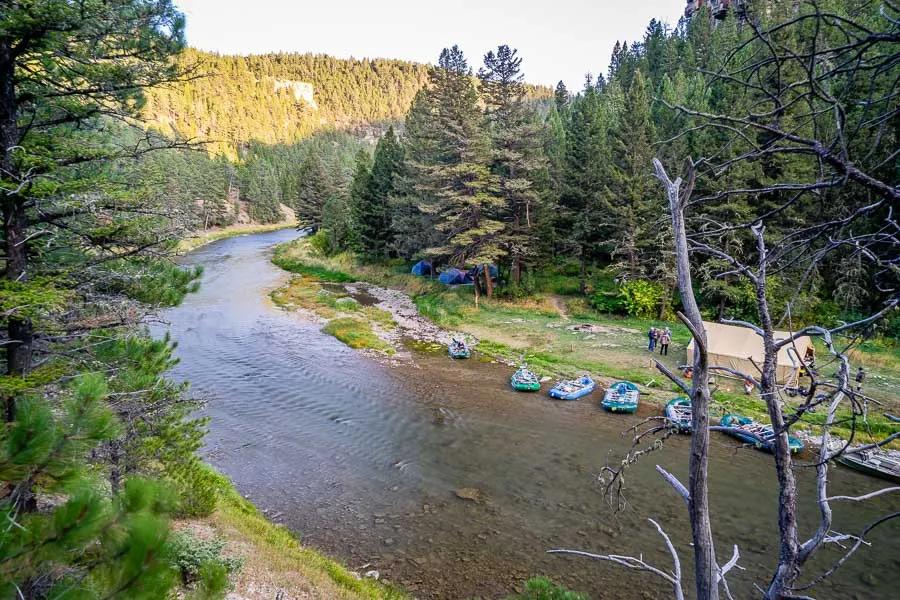
Fly fishing in Montana is known for broad valleys with views that go on for miles, rugged canyons with picturesque rivers, and waters that are home to several species of wild and native trout. The Smith River epitomizes the many great things about fly fishing in Big Sky country. Beginning in the late 1980s Montana officials recognized the unique quality and value of the Smith River as a recreational paradise. In 1989 the Montana Legislature Passed the Smith River Management Act. This collaborative piece of legislation provided essential foresight into managing the one-of-a-kind resource that is the Smith River. Because the Smith River flows for nearly 60 miles through some of the most remote and rugged country-side in Montana and is specially managed by the state of Montana, proper planning is essential for having a great Smith River fly fishing trip. Here are some tips to have a great Smith River trip.
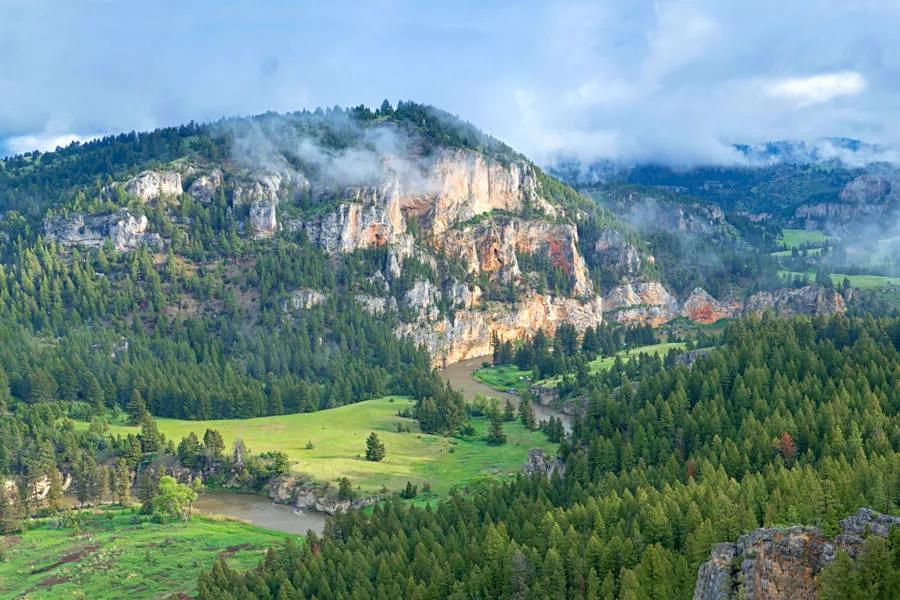
Apply for Your Permit or Book Your Professionally Outfitted Trip Early
The Smith River is specially managed by Montana's Fish, Wildlife and Parks. Floaters wanting to take the adventure themselves must apply for a permit. Because demand for a permit to float the Smith River is so high, floaters apply to be in the permit lottery. The window to apply to be in the permit lottery typically opens in early January and closes in mid-February. The application process is easy and the state notifies successful permit winners by email shortly after the mid-February deadline. With a set number of launches and a window of ideal conditions, it is important to create a strategy to pick your launch date. We know predicting the future is challenging, but when it comes to a Smith River trip you have to choose your launch date when you apply or when book with one of the Smith River outfitters.
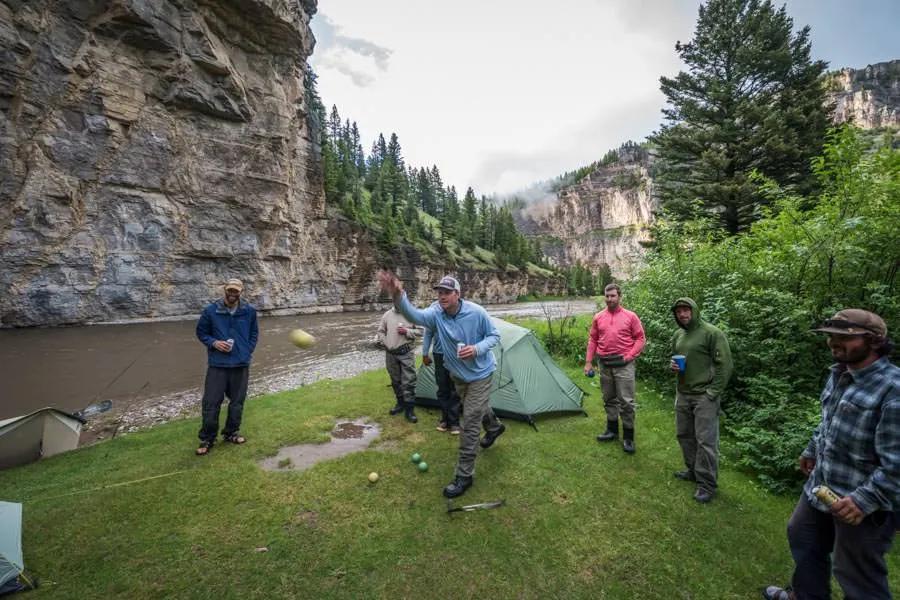
Choose When to Go When You Apply for Your Permit
A Smith River fly fishing and camping trip is a special experience--so there really is no bad time to take this trip. The primary floating, fishing, and camping months on the Smith River are April, May, June, and early July. April weather can be cold and have winter-like weather. May can be rainy with some higher streamflows, but the fish still feed on the Smith River during high streamflows. June often features the most pleasant weather paired with streamflows typically dropping. Early July can be similar to June, but the later it gets into July streamflows continue to drop and water temps rise with the warm summer weather creating less than ideal conditions for actively feeding trout. In some years anglers can also float and fish the Smith River in September and October if streamflows provide enough water. In general, fishing in April is best with streamers and subsurface tandem nymph rigs. May can see hatches of Mother's Day caddis, salmonflies, and golden stoneflies as well as very good subsurface fishing with nymphs. June is the best month for dry fly fishing with a variety of stonefly, mayfly, and caddis hatches. From July on, Pale Morning Duns, various caddis, and terrestrials round out the bulk of a Smith River trout's diet. When September and October roll around it is back to using streamers, tandem nymph rigs, and late-clinging hoppers for many of the river's aggressive brown trout.

Congrats! You Got a Launch Date or Booked with an Outfitter
Whether you won a launch permit in the lottery or are booking with an professional outfitter, congratulations are in order. Demand for these trips is high, especially in April, May, and June. If you booked your trip with an outfitter, the outfitter does all the prep and planning. You can relax and leave the task of planning to the pros; you will still want to practice your casting--learn a reach cast for sure. If you are doing the trip on your own, either by yourself, or as part of a large group, there are many things to consider when planning a Smith River trip. First, the type of watercraft you will use. April through June most people use rafts. Drift boats can be used if streamflows are above several hundred cubic feet per second (CFS). Rafts are the most versatile on a Smith River trip as gear can be loaded and strapped more easily on a raft than a drift boat. Must have items for a Smith River fishing and camping trip include quality tents, camp stove and/or grill, sleeping bags, coolers, table for meal prep, and high quality clothing for inclement weather. Additionally, bear proof food storage or a portable electric fence and a packable commode are now required on all Smith River trips.

A Week Before Your Trip
As the final countdown begins for your Smith River trip, it is important to ensure your fly boxes and tackle are well-stocked and your rods and reels and additional gear are in good condition. If you are booked with an outfitter they will most likely have flies and tackle, but it is a good idea to give them a call and check in. For fly selection read our Eight of the Best Flies for Montana's Smith River blog post to ensure you have the right flies. For tackle be sure to have a good selection of leaders and tippet. Our Choose the Correct Leader blog will be very helpful. Most Smith River veterans choose 7.5 foot 1X leaders for April and May trips because they can be adjusted or added to depending on fishing conditions. For June trips, have some 9 foot 3X and 4X leaders for fishing dry flies. The most common rods for a Smith River fly fishing trip in Montana are 9 foot 5- and 6-weight rods. 9 foot is a good length when fishing from a boat and 5 weight and 6 weights can work for dry flies, dry-dropper rigs, tandem nymph rigs, and streamer fishing. Additionally have quality clothing and outerwear, including dry bags and sleeping bags. If with an outfitter, they will provide dry bags and sleeping bags.
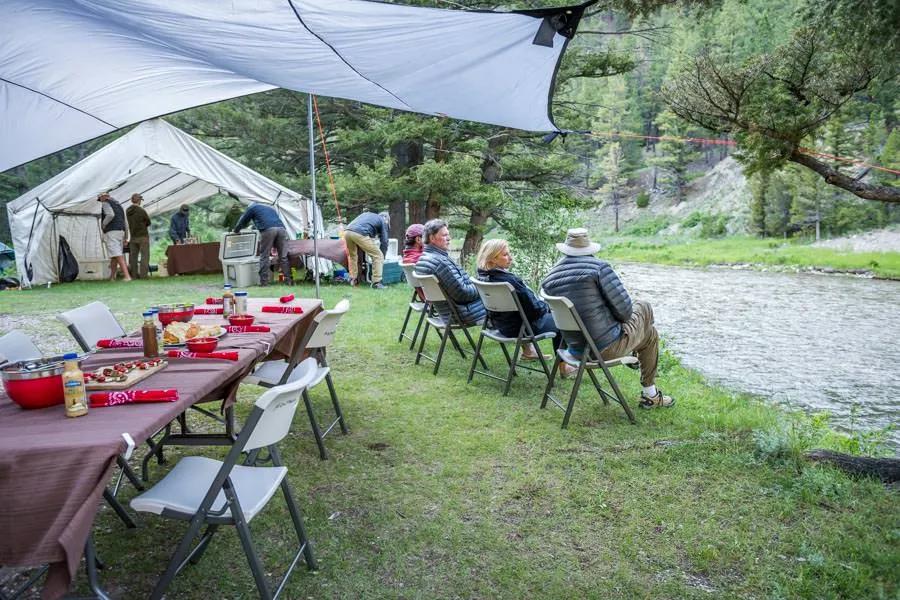
Two to Three Days Before Your Trip
If you are planning on your own, now is the time to start thinking about what you want to eat and drink while on a Smith River floating and camping trip. With the added storage a boat offers most people pack a quality camp stove, multiple coolers, and a well-stocked and appointed kitchen set-up. Because the Smith River flows through a beautiful canyon many floaters enjoy preparing tasty meals with quality ingredients to enjoy good food with the great views. The planning for this takes thought and time. Experienced river float campers often have separate dinner, breakfast, and lunch coolers to avoid opening the coolers any more than necessary. Also consider pre-cooking any raw meats to save time and fuel at camp. If all of this planning sounds like a lot of work to you, then consider booking with a professional outfitter. With a professional outfitter the planning and work is done for you and you can fish or relax once at camp.
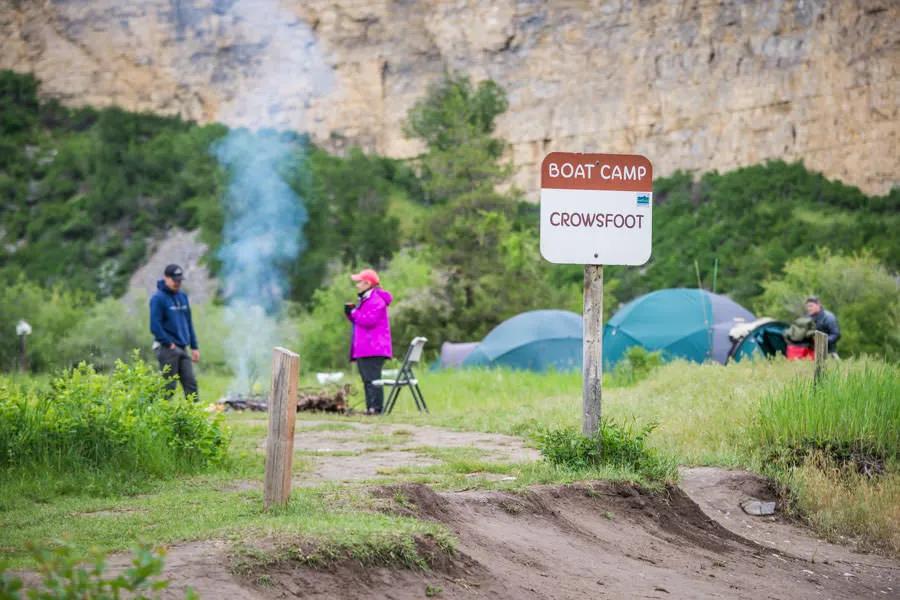
Selecting Your Smith River Boat Camps
The Smith River is a unique fly fishing trip through a remote canyon and Montana ranch country. Floaters stay in designated "boat camps." These specific areas are managed by Montana Fish, Wildlife and Parks. To best manage the campers on the river and ensure the best possible experience, Montana Fish, Wildlife and Parks staff use a lottery system to determine which floating party gets first pick of campsites. These camps are strategically placed throughout the river corridor. Knowing where to camp is a vital part of any successful Smith River trip. Most people spend 4 to 5 nights camping. A 3 night trip is also possible at high streamflows. Some camps are slightly more scenic than others and some camps might offer more walk-and-wade fishing options as well. If you are booked with an outfitter, you can feel confident they will choose the best campsites. With over 50 campsites on the Smith River spread out over the course of the river you are guaranteed a campsite that has good fishing and great scenery. When factoring where to choose, take into account how many nights you plan to spend on the river and how many river miles you want to float in a day. As a general rule for flows under 700 CFS, a 10-mile float on the Smith River is a full day. A 15-mile float is doable but requires an efficient approach to striking and setting camp and leaves little time for exploring once floating.
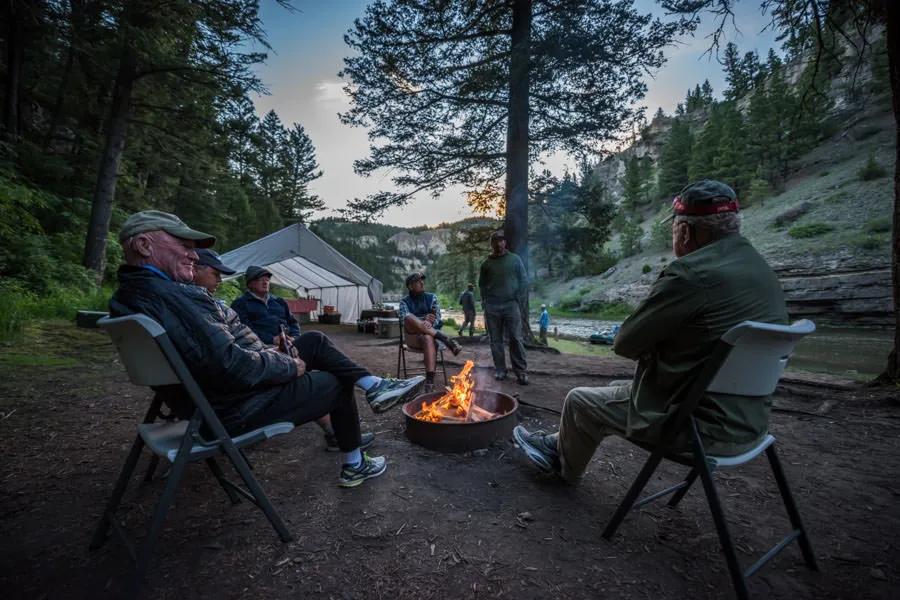
Load Up, Push Off, and Let River Life Take Over
Your launch day arrives and it is time to float. You're at Camp Baker on Montana's Smith River. Coolers packed. Campsites picked. Boats loaded. It's now time to push off and start your Smith River trip. Because the Smith River is a natural freestone river, its conditions can vary from day to day. If you are with an professional outfitter you can truly relax and cast to good looking trout lie after good looking trout lie, then roll into camp at the end of the day to fresh apps and happy hour. If you are going at it on your own, the work you put into planning can now pay off. By planning properly with a varied selection of flies and tackle you can set yourself up for success if the river is rising or dropping. Packing quality clothing and gear will ensure that any type of weather isn't going to put a damper on your trip. Bringing and prepping plentiful and tasty food means you will start and end each day cooking meals that are guaranteed to taste better than at home...because dinner at a riverside Smith River camp almost always taste better than another meal at home.
An overnight camping and floating trip on Montana's Smith River is an annual trip for some and a once-in-a-lifetime trip for others. Even though fishing is often the focus of the trip, the scenery and the overall high quality experience often outmatch the consistently good fishing. The river's unique management system has created one of the West's most coveted overnight camping and floating trips. Whether you book with an professional outfitter or plan to do-it-yourself, a Smith River fly fishing trip is not to be missed.
